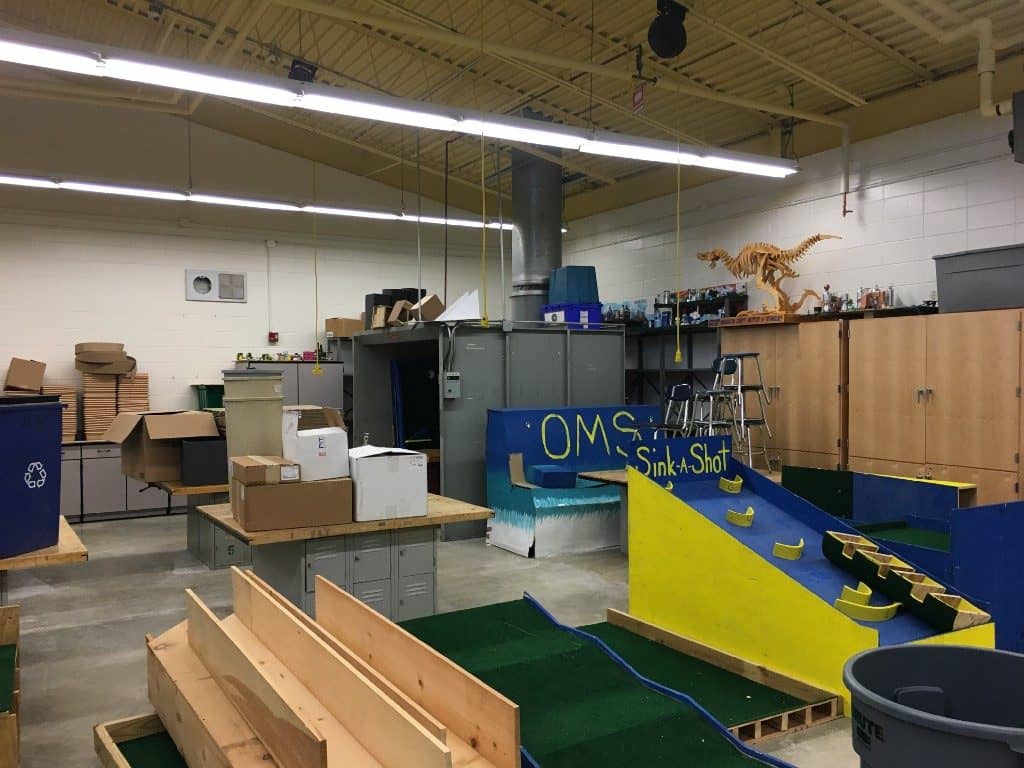
School districts fuse 20th century shop class with 21st century technology.

As area school districts propel themselves further into the 21st century, they’ve adjusted by finding ways to implement new technology into the classroom. One of the most popular ways of doing this has been to implement rooms in schools called makerspaces.
Before getting too in-depth, you should know makerspaces can have a variety of names. Sometimes they’re called fabrication laboratories (or fablabs), iSTEM rooms (for integrating science, technology, engineering and math), iSTEAM rooms (the extra “a” stands for art), STEM Labs, imagitoriums, imagineering rooms and hackerspaces. For the most part, they’re all the same, with only a few exceptions.
Coming up with an ell-encompassing definition for makerspaces is difficult, since not each one is exactly like the other.
“A makerspace is whatever you want it to be in your school,” said Anastasia Hanneken, the librarian and media specialist at Shamong’s Indian Mills Memorial Middle School. “If you went to a 100 different schools with makerspaces, you’d probably see 100 different types of spaces.”
In Indian Mills Memorial School’s makerspace, for instance, there are robots, a green screen, a 3D printer, computers, electrical circuit kits for children called LittleBits and Legos.
“It’s more project-based,” Shamong’s Superintendent Christine Vespe said. “They come in here and they just want to create.”
Think of it as a 21st century version of shop class. But instead of building birdhouses and wooden gumball machines, kids are building electrical circuits, programming robots and using computer programs such as Tinkercad, which create 3D designs, which can be printed from a 3D printer.
However, there’s still room for old school technology in many makerspaces. Inside the makerspace of Tabernacle’s Kenneth R. Olson Middle School — technically, OMS refers to its makerspace as an iSTEM room — sits a mini-golf course constructed by students. Right next to it is a “soccer billiards” table.
“You play with a mini soccer ball and you sink it like you would in pool,” OMS Principal Sue Grosser said.
Tabernacle’s makerspace is an attempt to integrate more STEM subjects into the school in a creative way. Teachers in various subjects can utilize the makerspace as part of their lesson plans.
“Maybe you can draw the character you just read about [in English class], maybe you could do 3D design for the character you just read about,” Tabernacle Superintendent Glenn Robbins said. “Things like that to expand your horizons instead of just English.”
“With a 3D printer, they could make a replica of a pyramid, they could make a video with the greenscreen and have their background look like Ancient Egypt,” Hanneken said. “So there’s a lot of different ways you could go with any of the things. But that’s just one example of how it could be implemented into the curriculum.”
Medford Township Public Schools experimented with the implementation of a makerspace — or fablab, as they call it — last year at Kirby’s Mill School. The result was a success, and now the district is putting fablabs into all of its elementary schools.
“Following the success of [the Kirby’s Mill] lab, the Medford Education Association donated over $600,000 toward the conversion of the other four elementary schools technology labs into fabrication labs,” said Tom Olson, the administrative director of programming and planning at Medford Township Public Schools.
As Hanneken showed The Sun around IMMS’ makerspace, students, who were allowed in the building that day a week before school started to set up their lockers, wandered into the makerspace and instantly began tinkering with the robots and the circuit boards without being told to. It was just out of curiosity. Every child who saw it immediately became excited.
“We want to give kids the time to be creative. We want them to learn what the design process looks like,” Hanneken said. “It’s really where things are going in education.”









